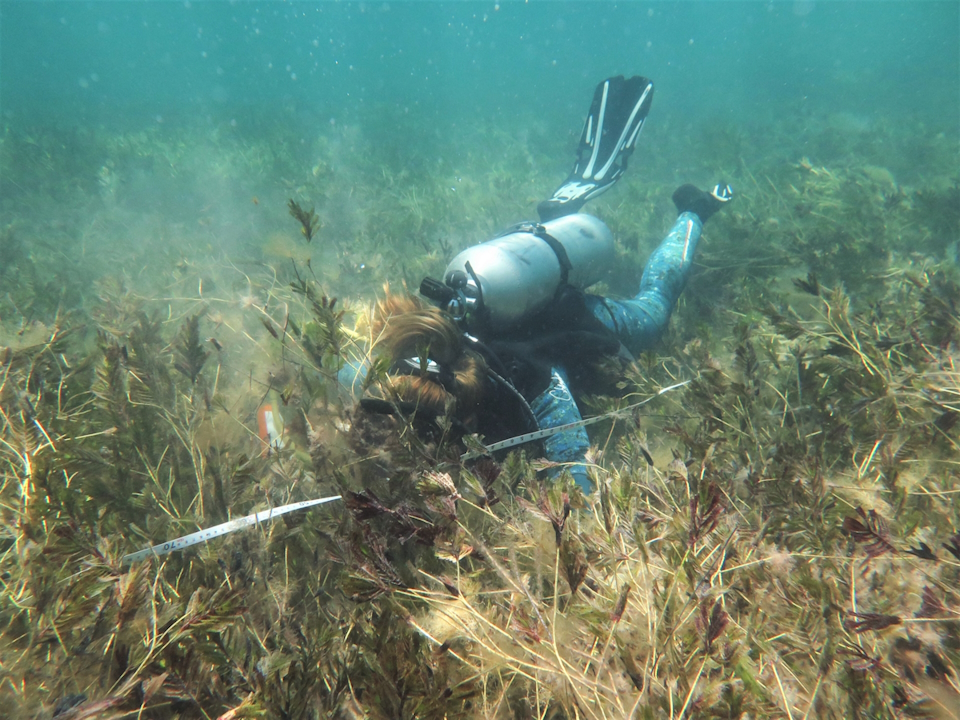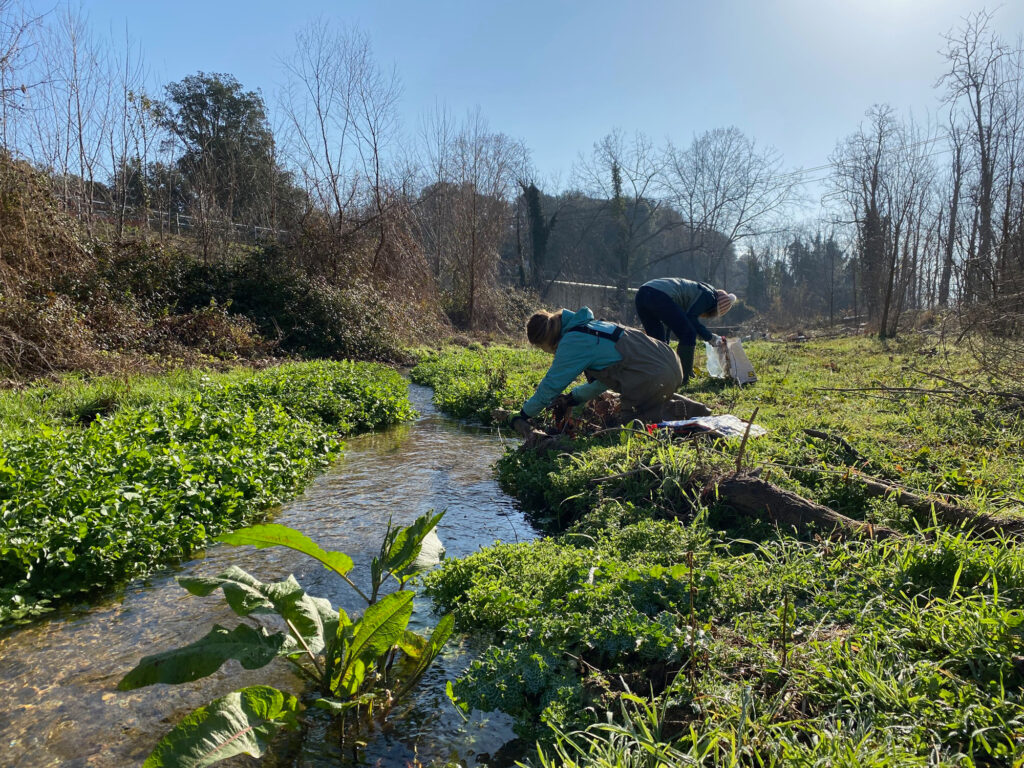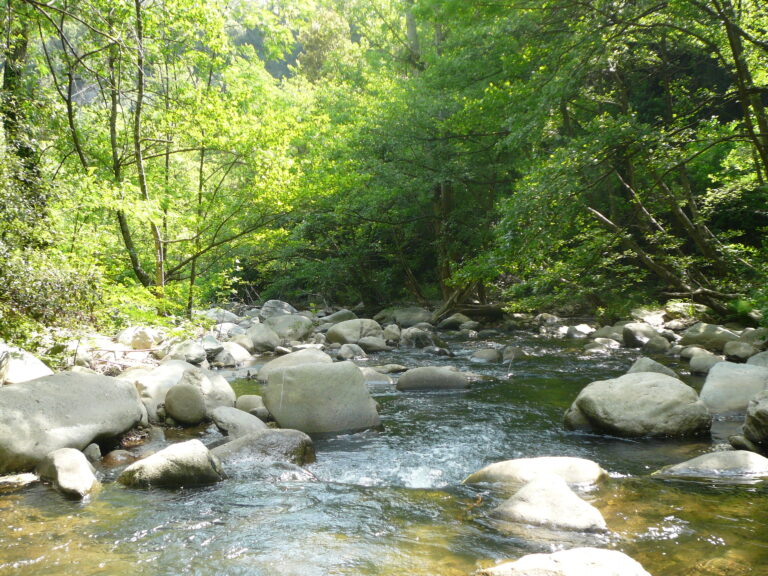Together with the Catalan Water Agency (ACA) and the Baix Llobregat County Council, they are launching a pilot project based on nature-based solutions to improve the water quality of the Rubí stream.The initiative involves installing constructed wetlands at the outlet of the Rubí Wastewater Treatment Plant (WWTP) with the aim of reducing chemical and biological pollutants resistant to conventional treatment processes and promoting the restoration of fluvial ecosystems.
The Catalan Water Agency (ACA), the Baix Llobregat County Council, the Spanish National Research Council (CSIC), and the pharmaceutical company AstraZeneca have today signed a collaboration agreement to create a constructed wetland area at the outlet of the Rubí Wastewater Treatment Plant (WWTP), with the objective of improving the quality of the water discharged back into the stream.
The agreement was signed by Carlos Closa, Vice-President for Organisation and Institutional Relations at CSIC; Marta Moreno, Director of Corporate Affairs and Market Access at AstraZeneca; Eva Martínez, President of the Baix Llobregat County Council; and Josep Lluís Armenter, Director of the Catalan Water Agency.
The current context of climate change and growing pressure on water resources makes it necessary to explore innovative and environmentally integrated methods to improve water quality and increase availability. In recent years, upgrades have been carried out at the Rubí treatment plant to meet these needs, significantly improving the quality of the treated water. Nevertheless, some emerging pollutants – such as perfluorinated compounds, microplastics, detergents, antioxidants, flame retardants, or pharmaceuticals – remain present in the effluent returned to the river and may have potentially adverse effects on the ecosystem.
Over the past 20 years, nature-based solutions such as full-scale constructed wetlands have proven capable of removing these chemical compounds and of renaturalising ecosystems. However, constructed wetlands still face a major limitation: the high demand for surface area, which restricts their use in urban environments.
Therefore, complementary treatment solutions inspired by nature are being proposed. These have already been tested at the Urban River Lab and other CSIC pilot plants, and they harness the capacity of plants and microorganisms, in combination with new materials, to retain and degrade polluting substances.
According to Eugènia Martí, researcher at the Centre for Advanced Studies of Blanes (CEAB-CSIC), “this project is highly relevant as it will allow us to apply, at full scale, several nature-based treatment systems that we have been studying under experimental conditions. In addition to improving water quality, we trust that the constructed wetlands will help restore biodiversity in the Rubí stream by creating new habitats that will benefit local flora and fauna.”
“Results from laboratory and pilot-scale studies show that the use of new materials in constructed wetlands, such as biochar, enhances the efficiency of emerging pollutant removal and can reduce the required surface area by a factor of between five and ten,” explains Víctor Matamoros, scientist at the Institute of Environmental Assessment and Water Research (IDAEA-CSIC). “We can now test these wetlands at full scale – a key step towards their sustainable implementation in wastewater treatment.”
Participating institutions and public–private collaboration
The agreement provides for joint actions to improve both the quality and availability of effluent water from the Rubí WWTP, while promoting the restoration of aquatic habitats and the enhancement of the surrounding landscape. The impact and feasibility of the implemented measures will also be evaluated, and environmental awareness will be encouraged.
In this project, CSIC participates through two of its research centres: the Centre for Advanced Studies of Blanes (CEAB-CSIC), specialising in aquatic ecosystem ecology, and the Institute of Environmental Assessment and Water Research (IDAEA-CSIC), a reference institution in environmental chemistry and water pollution.
Nature-based solutions: constructed wetlands at the treatment plant
The core of the intervention consists of building a quaternary treatment system at the outlet of the Rubí WWTP. Specifically, constructed wetland zones will be created using innovative materials and aquatic plant communities which, together with microbial communities, will act as biological filters to purify the water.
The effluent already treated by the plant will flow through these aquatic ecosystems, where the biotic activity present will help retain and degrade contaminants that escape conventional treatment. This method will reduce the concentration of emerging pollutants before the water returns to the fluvial environment. In addition, the wetlands will provide further benefits, such as the creation of new aquatic habitats that will enrich local biodiversity and may serve as spaces for recreation and community enjoyment.











